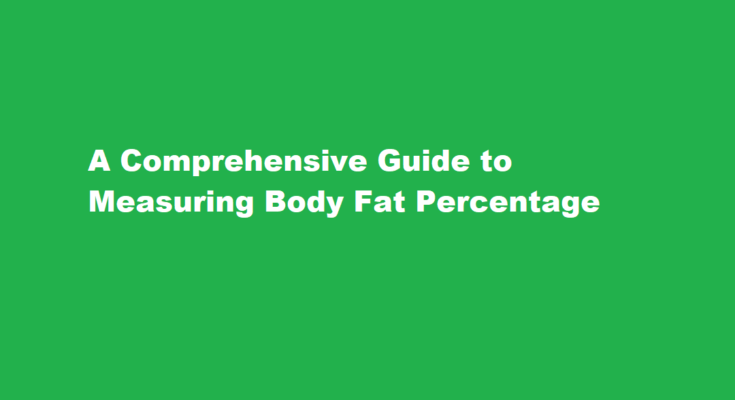Introduction
Measuring body fat percentage is a crucial aspect of understanding one’s overall health and fitness. Unlike just stepping on a scale, body fat percentage provides a more accurate representation of your body composition, helping you tailor your fitness and nutrition plans. In this article, we’ll delve into the various methods for measuring body fat percentage, their accuracy, and the importance of maintaining a healthy level of body fat.
Why Measure Body Fat Percentage?
Body weight alone doesn’t differentiate between fat and lean mass. People with the same weight can have vastly different body compositions. Measuring body fat percentage helps you monitor changes in fat and muscle mass, providing a clearer picture of your progress. It’s especially important because excessive body fat has been linked to various health issues such as cardiovascular diseases, diabetes, and joint problems.
Methods of Measuring Body Fat Percentage
1. Calipers – This method involves using skinfold calipers to measure the thickness of skinfolds at specific body sites. The measurements are then plugged into an equation to estimate body fat percentage. While affordable and widely available, accuracy can vary based on the skill of the person taking the measurements.
2. Bioelectrical Impedance Analysis (BIA) – BIA measures the resistance of electrical flow through the body, as fat conducts electricity differently than lean mass. BIA devices, including scales and handheld devices, are accessible, but factors like hydration and body type can influence accuracy.
3. Dual-Energy X-ray Absorptiometry (DEXA) – DEXA scans provide a detailed breakdown of bone, fat, and lean tissue. It’s highly accurate but often requires specialized equipment and is more expensive. It’s commonly used in research and medical settings.
4. Hydrostatic Weighing – This method calculates body density by measuring weight underwater. It’s accurate but cumbersome, requiring access to specialized facilities and trained personnel.
5. Air Displacement Plethysmography (Bod Pod) –The Bod Pod measures body volume by assessing air displacement within a sealed chamber. While less accurate than DXA, it’s more accessible and provides consistent results.
6. MRI and CT Scans – These medical imaging techniques offer precise measurements of fat distribution, but they’re expensive, not readily available for general body composition assessment, and are usually reserved for clinical purposes.
Selecting the Right Method
The choice of method depends on factors such as accessibility, accuracy requirements, and budget. For regular fitness tracking, calipers or BIA devices may suffice. Those seeking comprehensive and accurate data can opt for DEXA or Bod Pod scans. It’s essential to use the same method consistently to track changes over time effectively.
Tips for Accurate Measurements
- If using calipers, ensure the person performing the measurement is skilled for consistent and reliable results.
- For BIA measurements, stay adequately hydrated as dehydration can affect electrical conductivity.
- Before DEXA or Bod Pod scans, remove all jewelry and follow preparation guidelines provided by the facility.
Interpreting Body Fat Percentage
Body fat percentage norms vary based on age, gender, and fitness levels. Generally, for men, a healthy range is around 10-20%, while for women, it’s about 18-28%. Athletes may have lower percentages due to increased muscle mass. Extremely low or high body fat percentages can indicate potential health risks.
Frequently Asked Questions
What is the most common way to measure percent body fat?
Calipers are the cheapest, easiest and most portable method to measure body fat in specific areas.
What is the most accurate method for body fat testing?
To measure your weight in water, you will be seated undressed on a chair that is halfway submerged in water. According to the American College of Sports Medicine (ACSM), this is the gold standard for calculating body fat because of its high accuracy.
Conclusion
Measuring body fat percentage offers valuable insights into your body composition and overall health. While various methods are available, each comes with its own pros and cons. Regardless of the method chosen, consistency and a focus on overall health should guide your approach to achieving and maintaining a healthy body fat percentage. Always remember that individual goals and overall well-being matter most.
Read Also : Crafting Captivating Brochures The Art of Aesthetic Appeal



